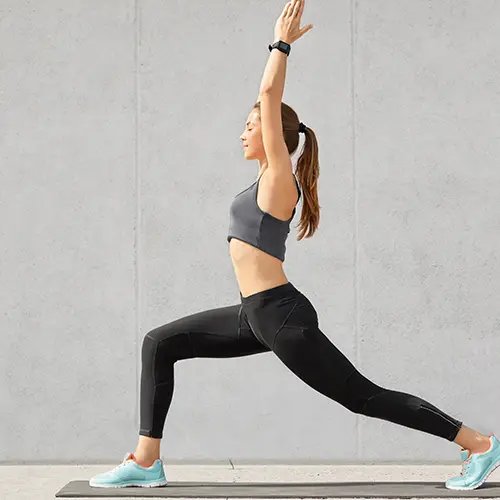Table of Contents
Do I Need Open or Closed Rhinoplasty? Choosing between open and closed rhinoplasty is crucial for individuals seeking nasal surgery. Rhinoplasty, a surgical procedure aimed at reshaping and enhancing the nose's appearance and function, offers two primary techniques: open and closed. This article provides a comprehensive guide to help you navigate this decision-making process, offering insights into each approach's key differences, benefits, and considerations.
Open rhinoplasty involves creating a small incision across the columella, the strip of tissue between the nostrils, allowing the surgeon to lift the nasal skin and access the underlying structures for precise modifications. On the other hand, closed rhinoplasty relies on internal incisions within the nostrils, providing more limited access while minimizing external scarring. The choice between these techniques depends on various factors, including the complexity of the desired changes, the surgeon's expertise, and the patient's individual goals and anatomy.
This article will explore the distinctions between open and closed rhinoplasty, offering valuable insights to help you make an informed decision and achieve the desired outcome for your nasal surgery.
What Is Open Rhinoplasty?
Open rhinoplasty is a surgical procedure used for reshaping the nose and is known for providing extensive access to the nasal structure. This approach involves an incision made on the columella, the small strip of skin that separates the nostrils at the base of the nose. This incision allows the surgeon to lift the nasal skin and expose the underlying structures of the nose fully.
The open approach offers several advantages:
- Enhanced Visibility: It gives the surgeon a direct view of the nasal structures, allowing for precise modifications. This is particularly beneficial for complex cases or detailed work, such as reshaping the nasal tip or correcting asymmetry.
- Comprehensive Access: Surgeons can easily manipulate and alter the nasal structure, offering more options for restructuring and shaping the nose.
- Precision in Reshaping: Due to the increased visibility and access, open rhinoplasty often results in more predictable and accurate outcomes, especially in complex procedures.
The main downside of open rhinoplasty is that it leaves a small external scar on the columella. However, this scar is minimal in most cases and becomes less noticeable over time.
This technique is commonly chosen for more complex or extensive reshaping needs, such as significant alterations to the nasal tip, major revisions, or reconstructive work. The choice between open and closed (endonasal) rhinoplasty depends on the specific needs and goals of the patient, as well as the surgeon's recommendation based on their anatomy and the desired changes.
How Does Closed Rhinoplasty Differ from Open Rhinoplasty?
Closed and open rhinoplasty are two different surgical approaches for nose reshaping, each with unique techniques and benefits.
Closed Rhinoplasty:
- Incisions: In closed rhinoplasty, all incisions are made within the nostrils. This means there are no external scars, as the incisions are hidden inside the nose.
- Visibility and Access: The surgeon works through these internal incisions, providing less direct visibility and access to the nasal structures than open rhinoplasty. This can make certain complex maneuvers more challenging.
- Recovery: Typically, patients may experience a slightly faster recovery period with closed rhinoplasty due to the less invasive nature of the procedure.
- Suitability: It's often chosen for patients who need more minor adjustments to the nasal structure, such as small bumps on the bridge of the nose.
Open Rhinoplasty:
- Incisions: Open rhinoplasty involves an incision on the columella, the small strip of skin between the nostrils. This external incision lets the skin lift off the nose, providing direct access to the nasal structures.
- Visibility and Access: This approach gives the surgeon a full view of the nose's internal structures, allowing for more precise and extensive modifications, especially useful in more complex or detailed reshaping procedures.
- Recovery: The recovery period might be slightly longer due to the more invasive nature of the procedure.
- Suitability: Open rhinoplasty is often recommended for more significant structural changes, such as major reshaping of the nasal tip or correcting severe nasal deformities.
In summary, the key differences lie in the location of the incisions, the level of access to nasal structures, and the types of modifications that can be effectively achieved with each technique. The choice between open and closed rhinoplasty will depend on the specific needs and goals of the patient, as well as the complexity of the required changes to the nasal structure.
Who Is a Good Candidate for Open Rhinoplasty?
Good candidates for open rhinoplasty typically include individuals who require more extensive or complex modifications to their nose. This surgical approach is often recommended for the following cases:
- Complex Nasal Tip Reshaping: Patients who need significant nasal tip reshaping, particularly if it involves intricate work, are often good candidates for open rhinoplasty. The open approach provides better visibility and access for detailed modifications.
- Significant Structural Changes: If someone requires major alterations to the nasal structure, such as reducing a large hump on the bridge of the nose or straightening a severely deviated septum, open rhinoplasty is often more suitable.
- Revision Rhinoplasty: Individuals who have had previous nose surgeries and require further corrections may benefit from open rhinoplasty. The open approach allows the surgeon to navigate and correct scar tissue and altered anatomy of earlier procedures.
- Nasal Obstruction Correction: For those suffering from breathing difficulties due to internal nasal structure issues, open rhinoplasty can provide the necessary exposure to correct these problems effectively.
- Realistic Expectations and Good Health: Ideal candidates should be in good overall health, non-smokers (or willing to quit smoking before and after the surgery), and have realistic expectations about the outcomes of the surgery.
- Psychological Readiness: Understanding the recovery process and having a positive, realistic mindset about the changes and potential challenges post-surgery is essential.
- Ethnic Rhinoplasty: Individuals seeking to maintain or enhance ethnic characteristics while reshaping their noses can also be good candidates, as the open technique allows for precise and respectful modifications.
It's crucial for anyone considering open rhinoplasty to consult with a qualified plastic surgeon. The surgeon will assess the individual's nasal structure, skin type, overall health, and aesthetic goals to determine if open rhinoplasty is the most appropriate approach.
What Are the Advantages of Closed Rhinoplasty?
Closed rhinoplasty, where all incisions are made within the nostrils, offers several advantages, making it a preferred choice for certain types of nasal surgeries:
- No Visible Scarring: Since the incisions are made inside the nostrils, no visible external scars exist. This is one of the most significant advantages of closed rhinoplasty, especially for patients concerned about visible scarring.
- Reduced Surgical Time: Generally, closed rhinoplasty takes less time to perform compared to open rhinoplasty. This can result in shorter operating times and potentially less anesthesia.
- Faster Recovery: Patients often experience a slightly quicker recovery period following closed rhinoplasty. This is attributed to the less invasive nature of the procedure, with less swelling and bruising compared to the open technique.
- Less Swelling: Since the dissection of nasal tissues is typically more limited in closed rhinoplasty, patients may experience less postoperative swelling. This can lead to a quicker return to normal appearance.
- Direct Nasal Structure Manipulation: Some surgeons prefer the closed technique for specific alterations as it allows them to manipulate the nasal structures directly in their natural, undisturbed alignment.
- Good for Specific Changes: Closed rhinoplasty is often suitable for patients who need more minor adjustments, such as refining the nasal bridge or removing a dorsal hump, without the need for extensive restructuring of the nose.
- Preservation of Nasal Tip Support: In closed rhinoplasty, the tip support mechanisms are less likely to be disrupted, which can be advantageous in maintaining the natural strength and shape of the nose.
It's important to note that choosing between closed and open rhinoplasty depends on individual patient needs the desired changes, and the surgeon's expertise and recommendation. A consultation with a qualified plastic surgeon is essential to determine the most appropriate approach for each patient.
How Do I Choose Between Open and Closed Rhinoplasty?
Choosing between open and closed rhinoplasty is a decision that should be made carefully, considering various factors related to your specific needs, goals, and the required procedure complexity. Here are some key considerations to help you make an informed choice:
- Understand the Differences: Familiarize yourself with the fundamental differences between open and closed rhinoplasty. Open rhinoplasty involves an external incision and is often used for more complex procedures. In contrast, closed rhinoplasty is performed through incisions inside the nostrils and is typically used for less extensive modifications.
- Assess Your Goals and Needs: Consider what changes you want to make to your nose. Open rhinoplasty might be more suitable if you require significant reshaping, particularly of the nasal tip or complex structural adjustments. For less extensive changes, closed rhinoplasty could be adequate.
- Consult a Qualified Plastic Surgeon: This is perhaps the most critical step. A skilled and experienced surgeon can assess your nose's structure, discuss your goals, and recommend the best approach. They can explain the pros and cons of each technique in the context of your specific case.
- Consider the Surgeon's Expertise: Different surgeons may have varying levels of comfort and expertise with each technique. Choosing a surgeon who is experienced in the specific procedure that best suits your needs is essential.
- Review Before and After Photos: Look at the surgeon's portfolio of before and after photos of previous rhinoplasty patients. This can give you an idea of the surgeon’s skill and the types of results they achieve with each technique.
- Understand the Recovery Process: Ask about the recovery process for both types of procedures. While closed rhinoplasty generally has a shorter recovery time, the best choice for you might depend on other factors, like the extent of the changes you seek.
- Evaluate the Risks and Benefits: Every surgical procedure has risks. Please discuss these with your surgeon to understand how they might vary between open and closed rhinoplasty.
- Personal Comfort and Expectations: You must feel comfortable with the chosen approach and have realistic expectations about the outcomes, recovery, and potential risks.
- Consider Second Opinions: If you're uncertain, consider getting a second opinion from another qualified surgeon.
Choosing between open and closed rhinoplasty involves a combination of personal preferences, physical requirements, and professional recommendations. Making an informed decision based on a thorough understanding of the options and a detailed consultation with your surgeon is essential.
FAQ
What Is Open Rhinoplasty?
Open rhinoplasty is a surgical technique for nose reshaping. It involves making an incision on the columella, the strip of tissue separating the nostrils. This approach provides the surgeon with direct visibility and access to the underlying structures of the nose, allowing for more precise modifications.
How Does Closed Rhinoplasty Differ from Open Rhinoplasty?
Closed rhinoplasty differs in that all incisions are made inside the nostrils, leaving no visible external scars. This technique is less invasive than open rhinoplasty and often involves a quicker recovery. However, it offers limited visibility and access for the surgeon compared to the available process.
Who Is a Good Candidate for Open Rhinoplasty?
Open rhinoplasty is often recommended for individuals requiring significant structural changes to the nose, such as reshaping the nasal tip or correcting complex deformities. Candidates should have good overall health, realistic expectations, and understand the potential risks and recovery process.
What Are the Advantages of Closed Rhinoplasty?
The primary advantages of closed rhinoplasty include shorter surgical time, reduced swelling and bruising, and the absence of a visible scar. It is suitable for patients requiring more minor adjustments to the nasal structures.
What Is the Recovery Process Like for Open and Closed Rhinoplasty?
Recovery from open and closed rhinoplasty generally involves swelling, bruising, and discomfort, which medication can manage. The recovery time for open rhinoplasty may be slightly longer due to the more extensive nature of the procedure. Patients typically return to normal activities within a few weeks, but complete healing can take up to a year.
How Do I Choose Between Open and Closed Rhinoplasty?
The choice between open and closed rhinoplasty should be made in consultation with a qualified plastic surgeon. The decision will depend on your specific nasal anatomy, the changes you wish to achieve, and the surgeon's expertise and recommendation.




















